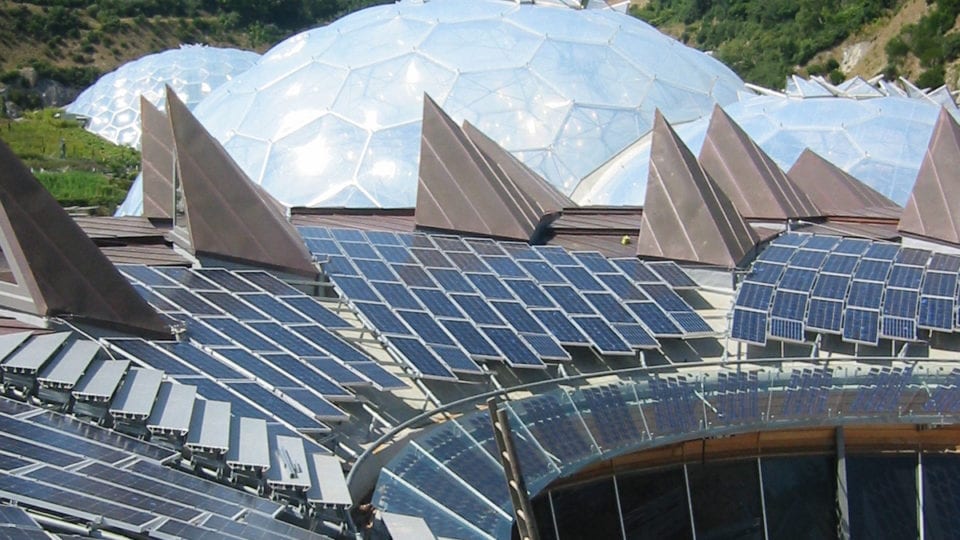Tie-up renewables with energy storage
Britain must adopt energy storage to cut payback times for domestic generation from renewables, argues Stephen Irish.
4th July 2016 by Networks

Britain has bountiful resources of renewable energy, but our exploitation of wind, wave and solar power lags other countries in Europe.
The UK sits toward the bottom of the league of European nations when it comes to electricity generation from renewable power – below Poland, Cyprus and the Republic of Ireland – and cutbacks to subsidy mechanisms such as the feed-in tariffs for domestic wind and solar installations earlier this year haven’t done the industry any favours.
“It is time energy suppliers and the government incentivised energy storage – along with a portfolio of other technologies such as smart meters – to encourage consumers to install distributed wind and solar systems.”
At the same time, electricity generation via coal is out of favour, and there are well-publicised problems in the development of the country’s first new nuclear reactor for more than 20 years. Against this backdrop, electrification of transport is booming: Britain is a leading nation in terms of adoption of the electric vehicle (EV), with some 58,000 new passenger EVs registered since 2011.
A much greater number of EVs on the road means much more strain on the electricity grid. Engineers are already warning of blackouts due to an energy supply crunch. In short, just as electricity demand is increasing, there are big question marks over supply.
Distributed, local generation provides a means of boosting supply to the grid – if solar and wind energy generated by consumers can be captured and fed back to the network efficiently and economically.
Domestic solar photovoltaic (PV) installations are popular – for example, there was a five-fold increase in solar PV capacity between 2011 and 2014. According to government data, overall solar PV capacity increased by 21% in the year to April 2016, compared to the year before.
But cuts to feed-in tariffs in 2016 for solar and the intermittent nature of renewable generation make the payback on such systems agonisingly slow – perhaps 25 years in a typical scenario.
One solution would be to make such domestic PV systems more intelligent and efficient via energy storage technologies such as lithium-ion batteries, allied to clever software that balances domestic supply to demand from the grid.
This demand-side response (DSR) strategy would enable the grid to meet demand from further electrification of heat and transport, and drastically reduce the payback time for consumers with domestic solar power installations.
At Hyperdrive Innovation in Sunderland, we are developing the technology to do this with partners such as Nissan, and a host of other technology firms in Britain. Our aim is to develop DSR energy storage systems that allow solar PV and micro-wind installations to pay for themselves much more quickly – while supplying unused electricity generated by consumers to the grid at times when demand is highest.
It is a win-win proposal for the grid, and for the environmentally-conscious consumer, and the technology has already been proven. In Japan, for example, they have developed schemes that balance the grid using distributed large-scale lithium-ion energy storage as part of the Yokohama Smart Community Project.
There is no reason why we couldn’t do the same in Britain.
Despite cutbacks to feed-in tariffs, exciting solar and storage products such as Tesla’s Powerwall demonstrate the ongoing attractiveness of green energy generation for the domestic market.
It is time energy suppliers and the government incentivised energy storage – along with a portfolio of other technologies such as smart meters – to encourage consumers to install distributed wind and solar systems, and provide energy to the grid at times when it needs it.
That’s one way in which Britain might climb the league table of renewable energy producers in Europe – and guard against the lights going out in the future.
Britain has bountiful resources of renewable energy, but our exploitation of wind, wave and solar power lags other countries in Europe.
The UK sits toward the bottom of the league of European nations when it comes to electricity generation from renewable power – below Poland, Cyprus and the Republic of Ireland – and cutbacks to subsidy mechanisms such as the feed-in tariffs for domestic wind and solar installations earlier this year haven’t done the industry any favours.
At the same time, electricity generation via coal is out of favour, and there are well-publicised problems in the development of the country’s first new nuclear reactor for more than 20 years. Against this backdrop, electrification of transport is booming: Britain is a leading nation in terms of adoption of the electric vehicle (EV), with some 58,000 new passenger EVs registered since 2011.
A much greater number of EVs on the road means much more strain on the electricity grid. Engineers are already warning of blackouts due to an energy supply crunch. In short, just as electricity demand is increasing, there are big question marks over supply.
Distributed, local generation provides a means of boosting supply to the grid – if solar and wind energy generated by consumers can be captured and fed back to the network efficiently and economically.
Domestic solar photovoltaic (PV) installations are popular – for example, there was a five-fold increase in solar PV capacity between 2011 and 2014. According to government data, overall solar PV capacity increased by 21% in the year to April 2016, compared to the year before.
But cuts to feed-in tariffs in 2016 for solar and the intermittent nature of renewable generation make the payback on such systems agonisingly slow – perhaps 25 years in a typical scenario.
One solution would be to make such domestic PV systems more intelligent and efficient via energy storage technologies such as lithium-ion batteries, allied to clever software that balances domestic supply to demand from the grid.
This ‘demand-side response’ (DSR) strategy would enable the grid to meet demand from further electrification of heat and transport, and drastically reduce the payback time for consumers with domestic solar power installations.
At Hyperdrive Innovation in Sunderland, we are developing the technology to do this with partners such as Nissan, and a host of other technology firms in Britain. Our aim is to develop DSR energy storage systems that allow solar PV and micro-wind installations to pay for themselves much more quickly – while supplying unused electricity generated by consumers to the grid at times when demand is highest.
It is a win-win proposal for the grid, and for the environmentally-conscious consumer, and the technology has already been proven. In Japan, for example, they have developed schemes that balance the grid using distributed large-scale lithium-ion energy storage as part of the Yokohama Smart Community Project.
There is no reason why we couldn’t do the same in Britain.
Despite cutbacks to feed-in tariffs, exciting solar and storage products such as Tesla’s Powerwall demonstrate the ongoing attractiveness of green energy generation for the domestic market.
It is time energy suppliers and the government incentivised energy storage – along with a portfolio of other technologies such as smart meters – to encourage consumers to install distributed wind and solar systems, and provide energy to the grid at times when it needs it.
That’s one way in which Britain might climb the league table of renewable energy producers in Europe – and guard against the lights going out in the future.
Comments
Login on register to comment
Related content

Power
Utility Week Live 2020

Innovation, technology & operations
Building a net-zero network for north Scotland
As owner of the electricity transmission network in the north of Scotland, SSEN Transmission has a critical role to play in the transition to net zero - by building the transmission infrastructure required to connect renewable electricity generation, and transporting that clean electricity to areas of demand, writes Bless Kuri, head of transmission system planning and investment.

Gas
2020 vision: Siemens’ outlook on the next 12 months
Will 2020 be a turning point on the road to net-zero? Energy systems specialist Siemens, headed by GB chief executive Carl Ennis, looks ahead to advances in generation, off-grid networks, electric vehicle uptake and corporate transparency.